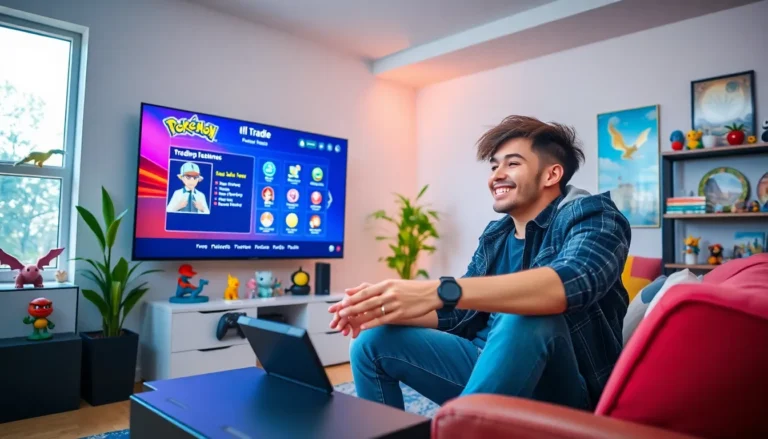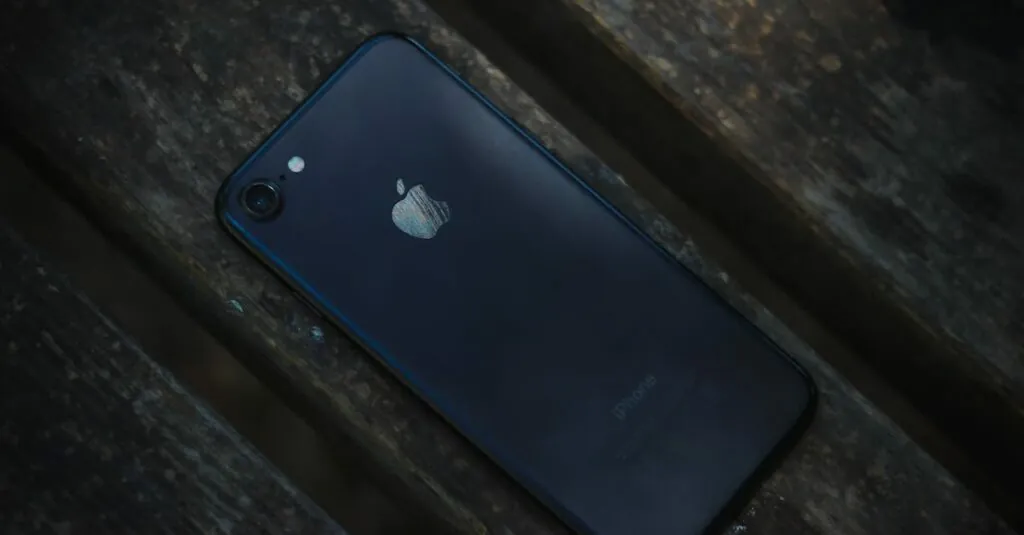Table of Contents
TogglePicture this: you’re scrolling through your favorite social media feed, and suddenly, your iPhone screen decides to take a vacation to the land of darkness. Frustrating, right? A dim screen can feel like your phone’s way of saying, “I need a break!” But before you start panicking or contemplating a dramatic phone funeral, let’s shed some light on the situation.
Common Reasons For a Dark iPhone Screen
Understanding why an iPhone screen appears dark can help resolve the issue quickly. Several factors contribute to this problem, including settings that can be easily adjusted.
Low Brightness Settings
Adjusting brightness settings often resolves screen dimness. Users can check brightness by navigating to Settings, then Display & Brightness. A user’s screen may appear dark if the brightness slider is set too low. Increasing it can restore visibility. Automatic brightness, when enabled, may also cause the screen to dim under certain lighting conditions. Turning off this feature may help maintain consistent brightness.
Night Shift Mode
Night Shift mode adjusts screen colors to reduce eye strain in low light. Users can easily toggle this setting by accessing Display & Brightness in Settings. When activated, it modifies the color temperature, sometimes making the screen seem darker. If users notice a dimming effect, they may want to disable Night Shift during daytime use.
True Tone Feature
The True Tone feature enhances viewing experiences by automatically adjusting colors based on ambient light. Users can find this feature within Display & Brightness settings. It creates a more natural viewing experience, but under certain lighting, it may contribute to a darker display. Disabling True Tone might improve screen brightness and clarity, especially in varied light conditions.
Troubleshooting Steps
If the iPhone screen appears dark, users can follow several troubleshooting steps to resolve this issue effectively.
Adjusting Brightness
Brightness settings might be lower than desired. Users can navigate to the Display & Brightness menu in the Settings app to increase brightness. Adjusting the slider can significantly enhance visibility. Automatic brightness may also lead to a dim screen. Turning off automatic brightness allows for manual control at all times. This adjustment can help in various lighting conditions.
Disabling Night Shift
Night Shift mode reduces blue light exposure but can make the screen appear darker. Users can disable this feature through the Display & Brightness menu. Simply toggle off Night Shift to restore the original screen brightness. This feature can also be set to operate during specific hours, which may contribute to the dim screen if left on. Switching off Night Shift resolves visibility issues quickly.
Checking for Software Updates
Software updates might solve the dark screen problem. These updates often contain bug fixes that can restore screen functionality. Users should check for updates by going to Settings, then General, followed by Software Update. Ensuring the device runs the latest version can improve performance and fix potential glitches. Regularly updating the software keeps the device running smoothly and optimally enhances screen brightness.
Hardware Considerations
Various hardware issues can also lead to a dark iPhone screen. Understanding these factors is essential for resolving the problem efficiently.
Screen Damage
Screen damage often results in reduced brightness and visibility. Cracks or deep scratches can obstruct light, making the display appear dim or dark. A defective screen component might cause this issue as well. Checking for visible damage is important. In cases of severe screen damage, seeking professional repair is usually advisable to restore optimal functionality.
Battery Health Impact
Battery health plays a crucial role in the overall performance of an iPhone. A degraded battery can affect the device’s brightness capabilities. When the battery struggles to supply adequate power, the screen may dim to preserve energy. Monitoring battery health in the Settings menu helps identify potential issues. Replacing a worn-out battery usually restores normal brightness levels, enhancing the overall user experience.
User Experiences
Many users express frustration over their iPhone screens unexpectedly dimming. Complaints frequently arise during activities like streaming videos or scrolling through social media. Some report that brightness settings seem fine until they switch to a brighter environment, where readability decreases significantly. Users often find Night Shift and True Tone features contribute to the issue, as these are meant to reduce eye strain but can unintentionally lower brightness.
Common Complaints
Users commonly mention their screens appearing overly dark in various settings. Situations include using the phone outdoors or in well-lit rooms. Dim screens can lead to difficulty in reading messages or navigating apps. Several users also note that sudden changes in brightness occur without conscious adjustments, increasing frustration when mobile. Another frequent complaint deals with the automatic brightness feature, which sometimes fails to react appropriately, leading to unexpected dimness.
Solutions From Users
Users often share tips that help restore screen brightness effectively. One popular solution involves manually adjusting brightness in the Display & Brightness settings. Turning off automatic brightness allows users to retain greater control over their screen visibility. Disabling Night Shift or True Tone temporarily also proves helpful for many. Furthermore, users recommend checking for software updates regularly, as these updates can enhance performance and fix bugs related to screen functionality. Replacing degraded batteries is another user suggestion that addresses issues with brightness, boosting overall experience.
A dark iPhone screen can be frustrating but understanding its causes can lead to effective solutions. By adjusting settings like brightness and disabling features such as Night Shift or True Tone, users can regain optimal visibility. Regularly updating software and monitoring battery health are crucial steps in maintaining screen performance.
For those facing hardware issues, seeking professional repair may be necessary. With these strategies in mind, users can enjoy a brighter and more enjoyable experience on their iPhones, ensuring they stay connected and engaged without unnecessary interruptions.







